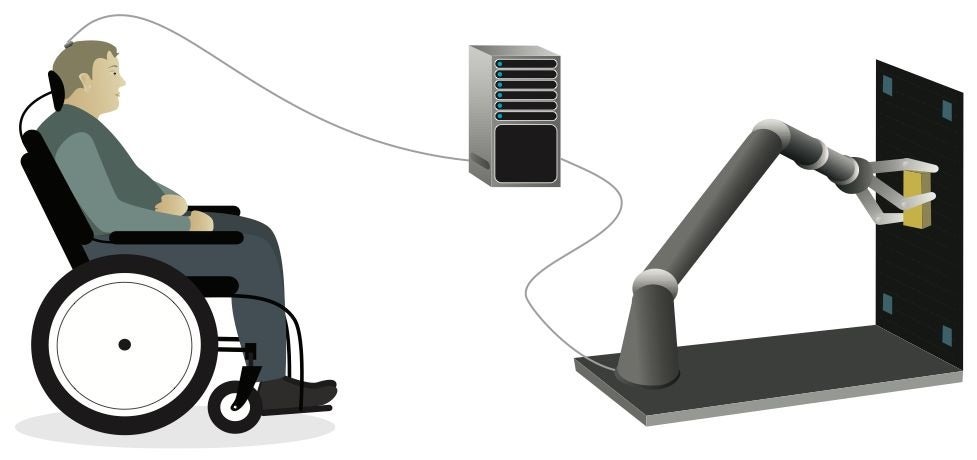Researchers of the University of California in San Francisco They have made a paralyzed man control a robotic arm who receives signs from his brain through a computer.
The person was able to grab, move and drop objects simply imagining himself by performing those actions.
The device, known as Cerebro-Order interface (BCI), worked for seven months without adjustments. Until now, these types of devices only worked for one or two days. The BCI is based on an artificial intelligence model (AI) that can adjust to the small changes that occur in the brain when a person repeats a movement (or in this case, an imagined movement) and learns to do so in a more refined way.
“This combination of learning between humans and Ia is the following phase of these brain-computer interfaces,” says neurologist Karuneh Ganguly, of the Instituto weill of UCSF neurosciences . “It is what we need to achieve sophisticated function and similar to that of real life.”
The study is published in the magazine ‘Cell‘.
The man, who lost the ability to move and talk Many years ago due to a stroke, he is able to move the robotic arm simply imagining the movements in his head.
The key, they explain in their work, was to discover how the activity in the brain day by day changes when a study participant repeatedly imagined that he made specific movements. Once the AI was scheduled to take into account these changes, it worked for months in a row.
Ganguly studied how patterns of brain activity in animals represent specific movements and saw that they changed day by day as the animal learned. He suspected that the same thing was happening in humans and that is why their BCI lost so quickly the ability to recognize these patterns.

The illustration shows how the brain-computer interface (BCI) receives brain signals to decode and allow a study participant to move the robotic arm.
Weill of Neurosciences of the UCSF
The researchers implemented tiny sensors on the surface of the brain that could capture brain activity when I imagined it moved. To see if his brain patterns changed over time, they asked the participant to imagine that he moved different parts of his body, such as hands, feet or head. First Simple movements with their fingers, hands or thumbs for two weeksand then control an arm and a robotic hand, but the movements were not yet very precise. Finally, he made the virtual arm do what he wanted.
Although he could not move, the participant’s brain could produce signals for a movement when he imagined he did. The BCI recorded the representations of these movements in the brain through brain sensors.
Once the participant began to practice with the real robotic arm, a few practice sessions were enough to transfer their skills to the real world. He could make the robotic arm take blocks, turn them and move them to new locations. He could even open a closet, get a cup and bring it closer to a water dispenser.
Months later, the participant could still control the robotic arm after one «tuning»15 minutes to adjust the way in which their movement representations had changed since it began using the device.
Something as simple as feeding or drinking water can change a person’s life with paralysis.
#person #paraplegia #moves #robotic #arm #thoughts


